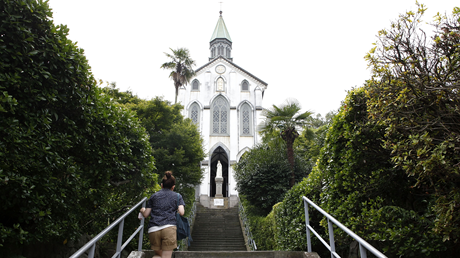A dozen “hidden Christian” sites on verge of gaining UNESCO World Heritage status.

This month, a dozen Christian landmarks in Japan—where just 1 percent of the population claims Christ—have been officially recommended to be named World Heritage sites.
Spanning across the Nagasaki and Amakusa region, these sites represent places where believers during the Tokugawa shogunate (1630-1867) suffered the harshest persecution and martyrdom in the Asian nation’s history.
The list includes the Oura Cathedral in Nagasaki, which memorializes 17 Japanese Christians and 9 European priests who were crucified at the order of the ruler; Hara Castle in Minamishimabara, a battlefield during the uprising when Catholic rebels were massacred, their leader beheaded, and their faith banned; and other “hidden Christian” sites, where Christ-followers carried on their beliefs in secret for hundreds of years.
These landmarks, if granted recognition by the United Nations Educational, Scientific, and Cultural Organization (UNESCO) next month, would join 14 other cultural World Heritage sites in Japan and over 800 around the world.
Japan’s recommendation comes five years after local leaders submitted the Christian sites for consideration. The country learned in early May that an advisory panel, the International Council on Monuments and Sites, had endorsed the “hidden Christian” sites for inclusion on the World Heritage List; the final decision will come out of a UNESCO meeting in late June.
“This recommendation by the Japanese government on hidden Christian sites is significant for several reasons,” said Makoto Fujimara, who engages Shusaku Endo’s novel on persecution in 17th-century Japan in his own book about faith in the midst of suffering, Silence and Beauty.
“First, ...
from
http://www.christianitytoday.com/news/2018/may/japan-unesco-hidden-christian-persecution-world-heritage.html
No comments:
Post a Comment